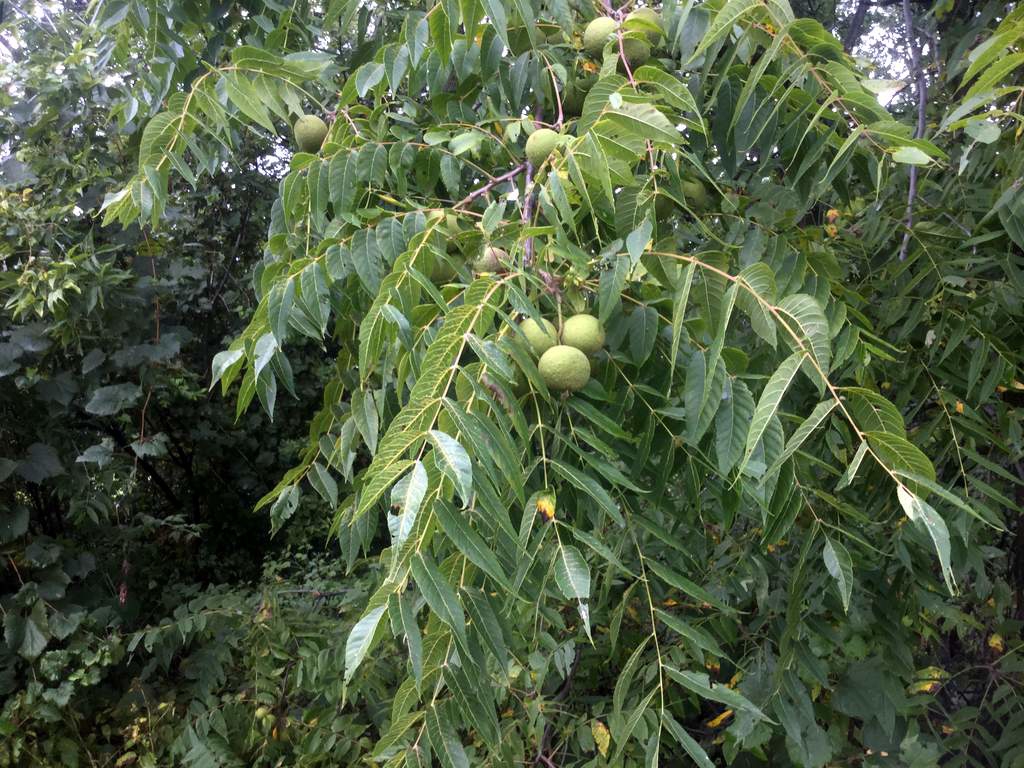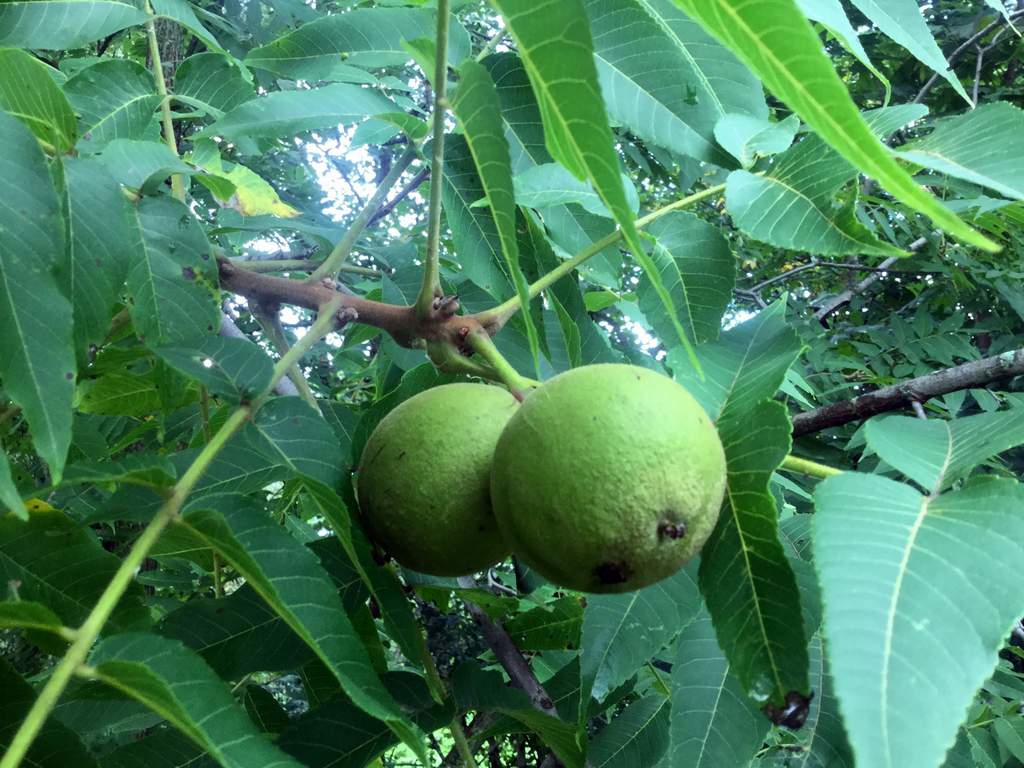Hooray for black walnut, with its heavy fruits swelling through August and into September. An open grown walnut is generous with its lower limbs, arcing widely out into the open air surrounding the trunk. The laden branches droop under the seasonal weight, often low enough fora  passerby to lazily pluck the fruits right from the branch. But that’s about the easiest part of the harvest. I have a skewed sense of walnut abundance in Vermont because I’ve got one in my backyard and have spent many hours watching the squirrels quarrel over the fruits in the fall. But this is pretty much the farthest north you’ll find this species, so its distribution across the state is patchy at best.
Habitat
A glimpse through a guide book pegs this species for deep (>30″), well-drained soils over limestone. Much of the Champlain Valley around 250-350′ in elevation is carpeted in deep beds of sand, deposited in deltas and along the shoreline of the Champlain Sea 10,000 years ago. These deep soils were pasted down atop the limestones, marbles, and dolomites that cover much of the Valley (all of these are calcareous). With the milder temperatures near the lake, so we’ve got the perfect conditions for black walnuts lacking across most of the rest of Vermont.
Where to find look
While distinctive enough in the growth, you’re probably more likely to encounter them by looking at the ground. With 2 heavy crops roughly every 5 years or so, there’s a better chance of discovering a black walnut in September when the fruits start littering the forest floor. Over the years I’ve found a few scattered walnuts in Centennial Woods, Vermont Nat’l Country Club and a few other spots. On rainy days I’ve been taking my dog to run at the Burlington Country Club adjacent to UVM and started noticing more and more walnuts along the edge of the course. The golf course has occasional outcrops of Winooski Dolomite, a calcium-rich rock, overlain by deep sandy soils. There was one tree along the foot path the skirts the golf course which had produced prodigiously this year and I went to harvest some of the walnuts. The Aiken Forest  Science Lab on Spear St was the closest parking. I parked my car and started walking over to the tree when I realized that the whole edge of the forest was pretty much black walnuts!!
It’s unusual this far north to find a forest dominated by walnuts, so I consider this spot a total gem. Walnuts are pretty shade intolerant and the other trees comingling in the canopy were primary succession species (e.g. boxelder). I imagine that in some of the thin swaths of woods lining the golf course that walnuts can maintain their dominance but in other larger forested patches they may hold onto the edge but will ultimately be shaded out by more shade-tolerant species. Like most primary succession species, the lifespan of these trees is on the shorter end of things (100-150 years old), so we will likely know within our lifespand what the future of these patches will look like. I suppose time will tell.
My next post will focus on the anatomy of the fruits!






